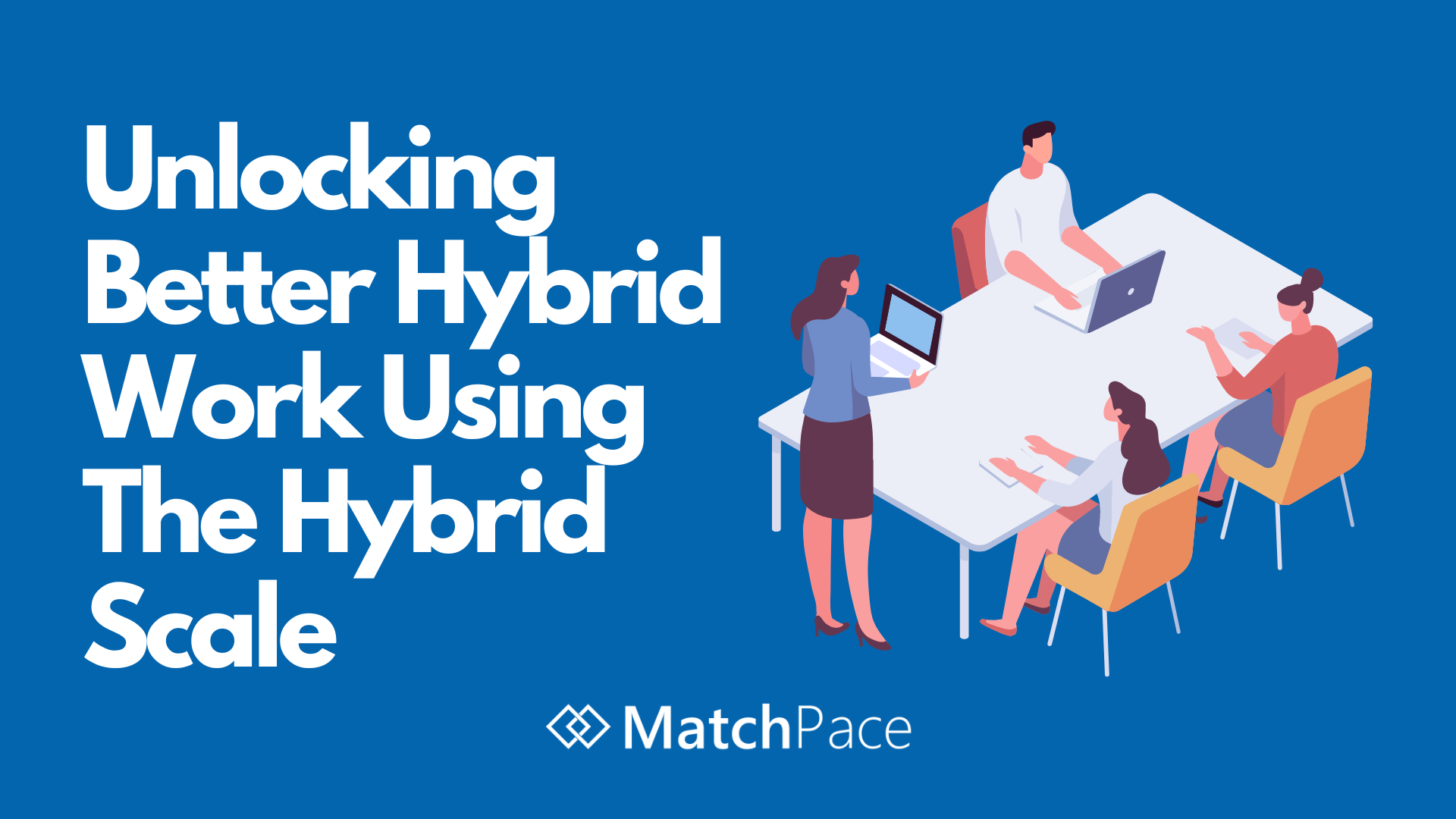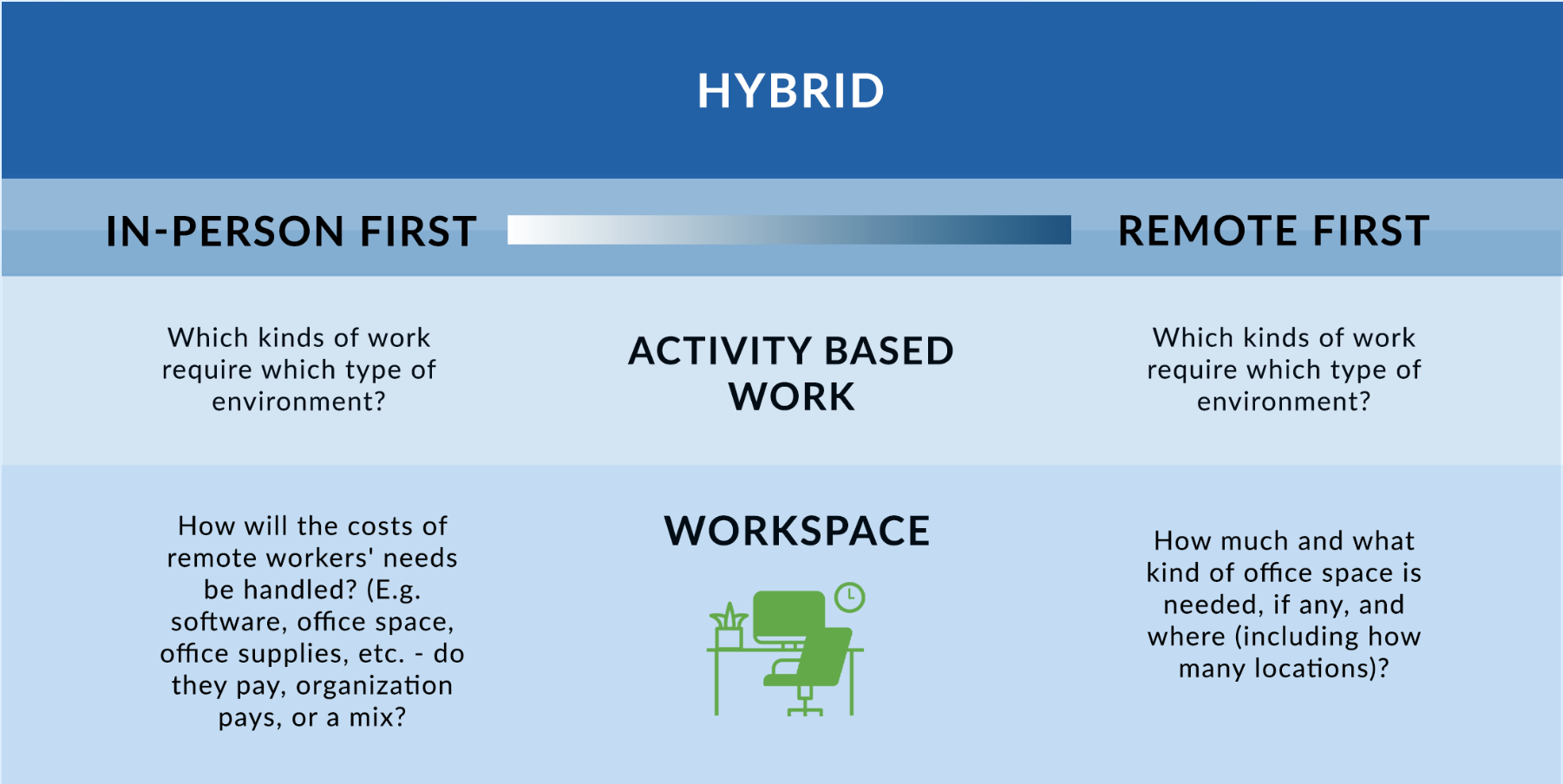Unlocking Better Hybrid Work: The Hybrid Scale
Debate continues to rage about whether or not employees should be “called back” to the office. This, of course, results in inevitable pushback from those who have benefitted from increased flexibility working remotely all or part of the time.
This debate is often couched as “employers vs. employees.” This zero-sum approach creates tension and erodes trust in the workplace. Is there a better way for organizations to consider workplace arrangements? Is there a way to balance the needs of employers, employees, and clients?
The good news is–yes! We’ve created a framework for decision-making around work arrangements that brings nuance back to what has increasingly become a black-and-white conversation.
We call this framework The Hybrid Scale. Instead of an all-or-nothing approach to where to work, leaders identify where their organization falls on a continuum between In-Person First and Remote First. Regardless of where an organization falls on the scale, it will operate as some version of a hybrid workplace. However, understanding where the organization falls on the scale gives both employers and employees clarity and helps everyone make better decisions.
Once an organization determines where they fall on the Hybrid Scale, it can use a 50-question framework we’ve created to make decisions in areas like workspace, employee status, work hours, employee engagement, communication, client service, and equity. Instead of throwing darts at the board to see where they land, leaders can make intentional decisions unique to the needs of their organizations.
The In-Person First vs. Remote First framework doesn’t just help leaders make better decisions for their organizations. It injects one of the biggest things missing from today’s conversations about work back into the workplace: mutuality. Instead of both leaders and employees making demands, threats, and absolutes, “quiet quitting,” or even boycotting, this framework reminds everyone that we’re all on the same team.
Yes, leaders want to enhance productivity and efficiency, improving their bottom line. And yes, employees want the flexibility that allows them to balance priorities like family and community with their jobs. But these things don’t have to be in opposition to each other. (In fact, they aren’t, but more about that another time.)
A shared vision, combined with clarity around whether an organization needs and wants to function as “In-Person First” or “Remote First,” empowers leaders and their teams to make quality decisions about when, where, and how to work–together.



